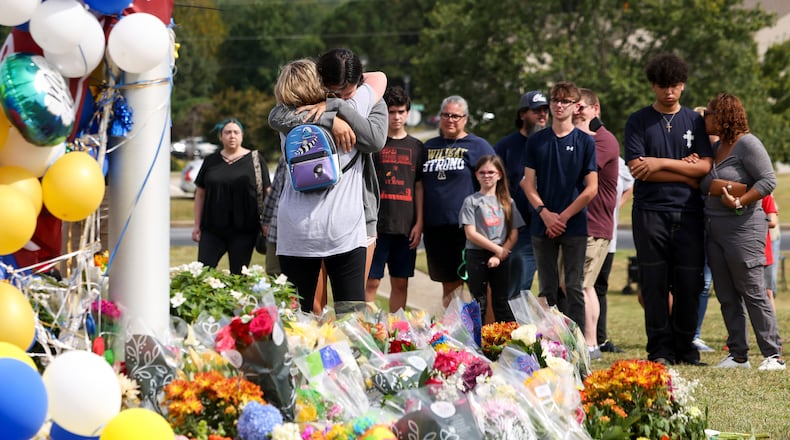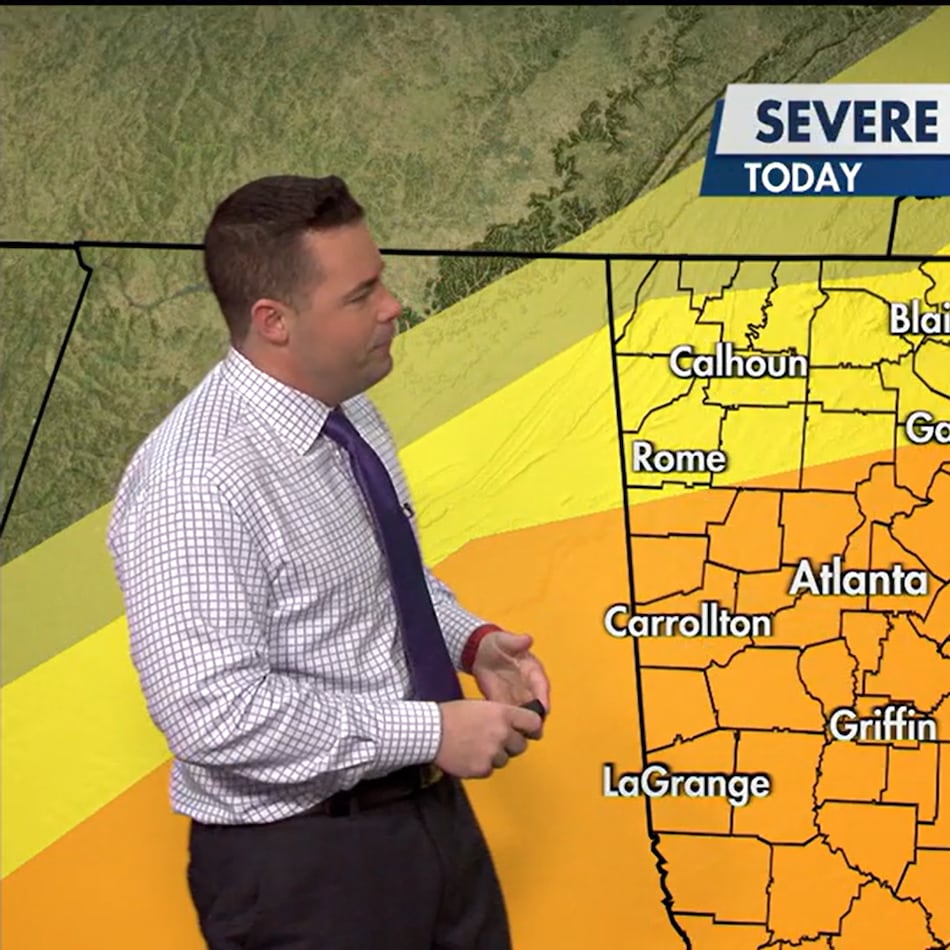‘Active shooter at a local high school with several dead.’
As a pediatric emergency medicine physician and a pediatric critical care physician working in the United States, we are prepared to receive that message on any given day. For the two of us, it came Sept. 4, after a person walked into Apalachee High School in Winder with a semiautomatic rifle and opened fire on classmates and teachers. The suspect is a 14-year-old boy.
We received a flurry of messages in the aftermath, as our transport services stood by, our colleagues volunteered to come in to help and additional details slowly trickled in. We held our breath, hoping the victims would be fewer than we feared and that we could save any injured children who made it to our hospital alive.
Credit: Handout
Credit: Handout
Credit: Handout
Credit: Handout
‘Four dead, multiple injured, suspect in custody.’
Despite being members of highly trained medical teams, we were not able to help the children killed in Winder. As at Sandy Hook Elementary and Robb Elementary, the suspect at Apalachee High used an AR-15-style rifle, abruptly taking the lives of two students and two teachers. Such a weapon should never be in the hands of a child. Bullets from an AR-15 can shatter organs and leave children so mangled they are unrecognizable to their parents.
The shooting in Winder was the 45th school shooting in our country this year, according to the Gun Violence Archive, and the deadliest this year. The United States is, by far, the world leader in this category. Schools should be safe spaces where children can grow and thrive; learning how to stop a teacher from bleeding to death should not be part of the curriculum. A recent national survey found that 51% of teens surveyed worry about school shootings and nearly 60% “have recently thought about what would happen if a person with a gun entered” their school.
School shootings are just the tip of the iceberg. Firearms are now the leading cause of death for children and teens in the United States. In June, U.S. Surgeon General Vivek Murthy declared firearm violence in America a public health crisis. A recent advisory report showed firearm mortality among children in the United States was up to 22-fold higher than comparable countries like Canada and Australia. Black children are also disproportionately affected; though only 14% of the U.S. youth population, they account for 46% of youth firearm deaths.
For every one child that dies by a firearm, there are at least four that survive their injuries, often at great cost. We have treated countless children with long-term health consequences from firearm injuries. Some children lose their ability to walk, eat, talk or interact as they did before. Children who survive firearm injuries are also more likely to experience problems with pain, depression and substance use thereafter. Siblings of children killed by firearms also have a substantially increased risk of psychiatric disorders, and adolescents exposed to a school shooting are more likely to avoid school due to feeling unsafe. The victims in Winder, as well as their siblings and classmates, will undoubtedly be impacted for years to come.
‘It could have been prevented.’
As Paul Wise, a pediatrician and public policy expert, has said, “pediatricians are the ultimate witnesses to failed social policy.” We see that failure in Georgia, where a child is more likely to die from a firearm injury than from cancer, a car crash or any other cause. Yet, it is easier for a Georgia teen to access a firearm than it is to obtain a driver’s license.
In Georgia’s most recent legislative session, legislators introduced myriad bills to address the gun violence public health crisis. Perhaps most encouraging was HB 161, the Pediatric Health Safe Storage Act, which would require guns that can be accessed by a minor be stored securely to prevent unsupervised use. In states with similar child access protection laws, child firearm fatalities are fewer overall, with unintentional child firearm injuries reduced by more than 50%. CAP laws help create barriers to firearm access for youth at risk of suicide, decrease unintentional shootings by young children and reduce gun thefts. They could also decrease the risk of school shootings, because most school shooters have historically obtained their firearm(s) from a close relative. The suspect in the Apalachee shooting was reportedly given his rifle by his father. Despite the evidence supporting CAP laws, HB 161 did not make it to the floor for a vote this year.
Another type of gun safety measure that could save kids’ lives in Georgia is extreme risk protection orders. ERPOs allow for the temporary removal of firearms from those deemed a threat to themselves or others. Though details remain unknown about the motive and mental state of the suspect in the Apalachee shooting, we know ERPOs can prevent some mass shootings, homicides and suicides.
‘I don’t know how we can keep doing this.’
We often hear this sentiment from our colleagues. It is hard to find hope as you hold the hand of a wailing mother whose son is dying, or tell a father his previously healthy daughter will never breathe on her own again. But we cannot give up when we know these deaths are preventable.
As a society, we have reduced pediatric motor vehicle deaths using harm-reduction policies that have improved motor vehicle safety. We can employ similar strategies to reduce child firearm deaths. Though this public health crisis might feel insurmountable, it is unacceptable to accept the status quo.
So, we ask you to join us in calling on state lawmakers to pass evidence-based, common-sense, bipartisan gun safety legislation that protects children in our communities. We also ask you — regardless of your age, gender, race, political party or gun ownership status — to vote for candidates who champion such legislation. Kids in Georgia are depending on us.
Sofia Chaudhary is a pediatric emergency medicine physician. Anna Rodenbough is a pediatric critical care physician. The views and sentiments expressed here are theirs and are not intended to represent those of their employers or affiliated institutions.
Keep Reading
The Latest
Featured




